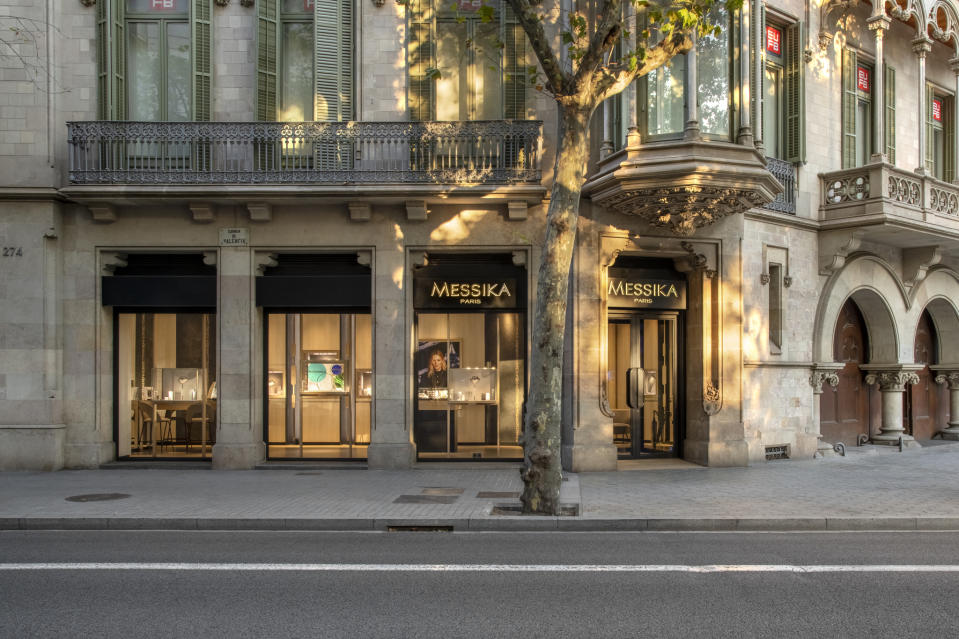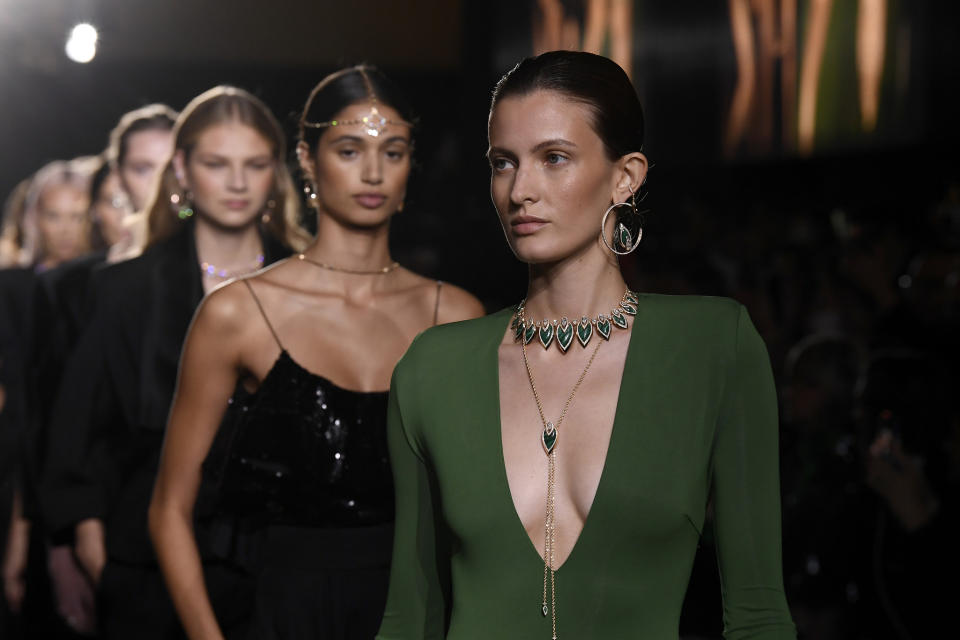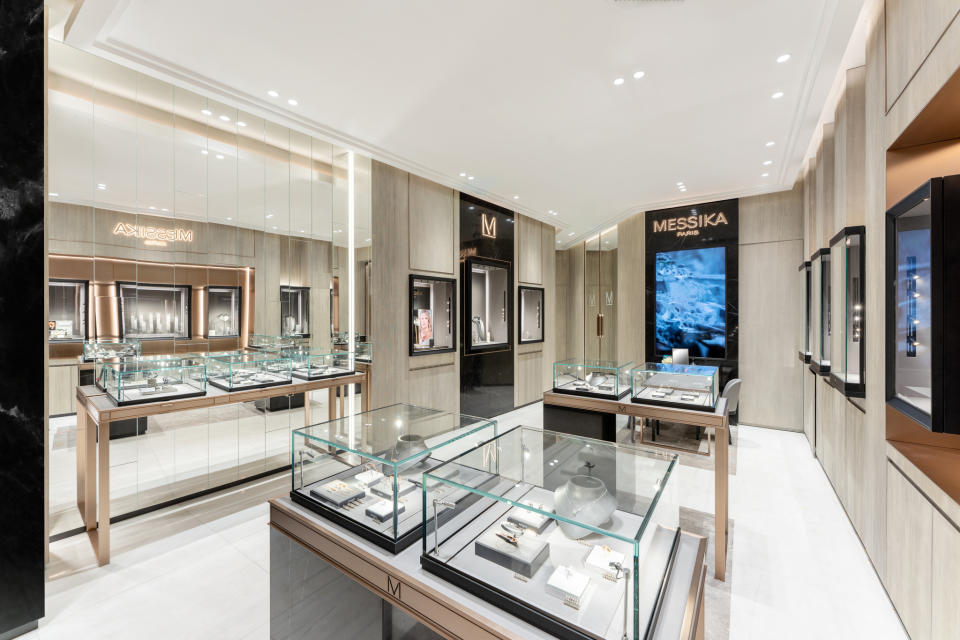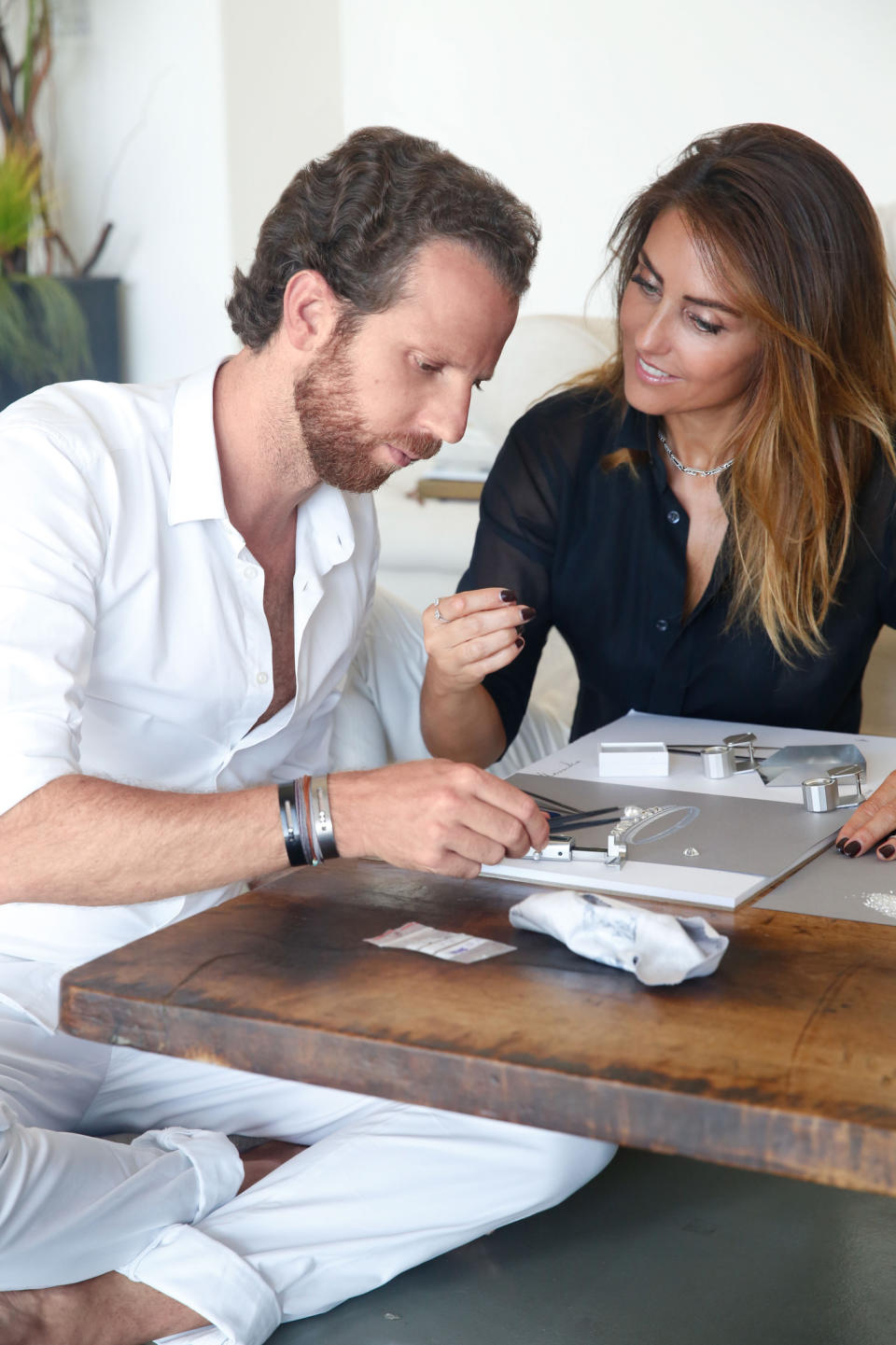How Messika Weathered the Pandemic Without Global E-commerce

Just before the COVID-19 pandemic hit, diamond specialist Messika was going from strength to strength.
“The first two months of 2020 had crazy figures, like a 70-percent growth in sales and just weeks before lockdown, we were offered a gem of a boutique in Saint-Tropez, the kind of spot that wouldn’t be there the next morning,” remembered chief executive officer Jean-Baptiste Sassine on a Zoom call.
More from WWD
It was shaping up to be a stellar year for the French jeweler, which expected to top the $120 million in sales of 2019, was opening a subsidiary in Hong Kong to ramp up its presence in Asia, and continuing to expand its network of 450 points of sale across 60 countries. And founder Valérie Messika felt like the company had finally cracked the U.S. market, a tricky territory it had spent five years exploring and where growth was strong.
Eighteen months on, the French jewelry label’s roadmap may have taken a few detours but both executives, who are also husband and wife, were buoyant. Not only did the brand put on a full-scale runway show during Paris Fashion Week to celebrate its second high jewelry collaboration with Kate Moss, but the company seems to have turned the corner of the pandemic — and then some.

Damian Foxe/Courtesy of Messika
That Saint-Tropez boutique opened right after France’s first lockdown, suffering only a few weeks of delay. A dozen more followed, including in Hong Kong, Tokyo, Barcelona and Chengdu.
Sassine credited their resilience to still operating like “a jewelry start-up,” although one that is a far cry from its 2005 debut when he had to go door-to-door to convince retailers to give them a sliver of space in their windows.
And where 2020 had left them down 10 percent overall, Sassine indicated that turnover has grown 50 percent compared to pre-pandemic levels, coming just shy of $200 million, with 84 percent of that growth being organic.
Here, Sassine and Valérie Messika discuss how wooing a local customer helped them navigate their way through a pandemic — even without global e-commerce.
WWD: Do you think this level of growth is sustainable?
Jean-Baptiste Sassine: Given our retail expansion, and the fact that our previous investments are starting to pay off, the temptation would be to say yes. But the truth is, I don’t know if that’s what I wish for the company. Even with good tools and solid foundations, it’s a big ask on the teams and on production. If we hit 30 percent growth we’ll be happy because we’ll have pressed on, consolidated what we have put in place and not gone too fast. What the pandemic taught us is that we’re resilient; that what we built is stable and no flash in the pan.
WWD: Was e-commerce the main growth driver in this period?
J-B.S.: Not as such. As you can imagine, digital retail has grown very strongly, as mentalities change and late adopters finally going toward it more and more. But we didn’t experience one geographical area slumping — even in Asia, which is still a relatively new market for us — or physical retail being abandoned in favor of e-commerce.

Courtesy of Messika
WWD: What proportion does it represent now?
J-B.S.: Currently, we are only open on the euro zone and, for less than a year, on the U.S. market, so e-commerce doesn’t yet represent a significant proportion of our turnover. While we are strong on social [platforms] because that’s where our core customer is, e-commerce is one area where we aren’t very strong. We’ve only been around for 15 years, and while our growth has been steady, we are still a small-to-medium-sized business. We favored steady growth. What we are seeing is that sales have more than tripled there since 2019, so we know there’s room for growth there. We are working on opening on Tmall in 2022. We’ll catch up, you’ll see.
WWD: Do what do you attribute 2021’s performance?
Valérie Messika: First of all, the jewelry market is doing well and we, along with other brands, are all in an upward spiral. Then, it’s about who we are. Messika isn’t about diamonds as signs of power and wealth but as signs of personal style, by offering pieces that were not intimidating to a younger customer. Our competitors aren’t necessarily other jewelers — it can be a pair of shoes, or a new handbag. That’s allowed us to break out in a highly coded and very occasion-led sector to take market shares, even in the pandemic.
J-B.S.: In people’s imaginations, we are more in the everyday purchase category, although we do have clients who come to us for bridal, so we haven’t had that crashing effect with the postponement of weddings.
WWD: Physical retail was highly impacted, but you seem to have weathered this better than most…
J-B.S.: One of our strengths is that we perform well with local consumers, in all of our markets. What is important to us is that French, Swiss or Russian customers find things they love and they don’t end up feeling like our focus is trying to capture, say, a Chinese customer over them. That’s who we are speaking to, not chasing tourist and visitor business, even in department stores. So when department stores found their client base eroded by travel disruptions, consumers still came to us — when retail points were open of course. One standout example is our store in Hong Kong, which opened last year, even though international and local borders remain closed. It has performed well at a moment where other brands have seen their sales figure crash due to their reliance on consumers from mainline China visiting [the city] to shop.
WWD: With 50 stores by the end of 2021 and 490 retail points overall, how do you speak to a broad and diverse audience at a local level?
J-B.S.: It’s not about having different offerings for different markets. It’s about being who we are and expressing our own recognizable DNA. Thinking that a Middle Eastern customer will want designs with arabesques or that a Chinese one will favor red is an old way of thinking. Today, our Move collection is the same across all markets, from Paris to Shanghai, Los Angeles to Doha. And I believe that [our offering] fits the zeitgeist, our clientele is younger and we are good with image.

Kristy Sparrow/Courtesy of Messika
WWD: Is that why you have ambassadors who become co-creators, rather than just faces, of the brand?
V.M.: The collaboration with Kate Moss [now in its second chapter] is a continuation of what we had done with Gigi Hadid [in 2018 and 2019]. My desire was to go for collaborations because they are something quite youthful, modern and not traditionally done in fine jewelry. Most of the time, it’s about archives. What I found interesting was to cross a trend, a style with the codes that I initiated for the brand. In Kate’s case, it was about starting with her personal collection, which has very vintage, very Art Deco pieces and bringing our universe into that.
WWD: Fine jewelry for men is a growing market segment. How big is that market for Messika?
J-B.S.: It’s quite marginal, amounting to a few percent of our turnover for two reasons. First, because we don’t promote it much. Moving into a new market segment, particularly for a brand like ours, is heavy-lifting if you want to make a splash with, say, a communication campaign. We have therefore decided to showcase our men’s line through social platforms and in store. The uptake is step-by-step with natural purchases from walk-in customers, women purchasing gifts for the men in their lives, men who are discovering us. Our new My Move [featuring a diamond motif on a leather bracelet] will contribute to developing that segment, as it is more unisex and will be shown on both men and women.
WWD: The price of masculine styles is also lower…
J-B.S.: That’s the second reason. As they’re made of titanium, these items are among our most accessible. The reality is that it’s [still] rare that a male customer will want to spend 4,000-5,000 euros in jewelry [for himself]. At the moment, it’s around 1,000 euros, 1,500 at a push. So we have been careful to tailor our prices with this in mind. So even if we sold as many as we do of our most popular [and more female-oriented] pieces, it would still not have the same financial weight.
WWD: How has the average spend evolved?
J-B.S.: Our average price is still in the 2,500-to-3,000 euros bracket, but we have seen our customers spend more in fine and high jewelry, as well as an increase in repeat business. Our industry is one where confidence is fundamental between customer and brand, so for a brand as young as ours, it’s a great compliment. We haven’t forgotten where we started, so we’re the first ones surprised and very touched when a client loves our brand enough to spend 400,000 or a million euros with us — with that kind of budget it would have felt logical to head to Cartier or Van Cleef & Arpels!

Courtesy of Messika
WWD: How many store openings are planned in 2022?
J-B.S.: Overall, there will be around 15 new openings across the globe — every continent except Oceania! There are markets where we have to reinforce our leading position, such as Europe and France in particular, where we will be opening our first stores in cities like Marseille, Bordeaux and Nice, where we had previously worked with wholesale partners and will be switching to our own boutique. Our first store in Luxembourg will also open in 2022.
WWD: And outside Europe?
J-B.S.: The U.S. is a tough market where the lion’s share is taken by big players like Cartier or Chanel, and American brands. So when you’re a young French brand, you have to hang in there and be patient. The work of the past five years, including the opening of our stores in New York and Los Angeles, is starting to pay off.
For the Middle East, we are opening stores in places where we already have a presence but these are to be the new flagship. In Qatar, we already have two stores but the third will be over 1,600 square feet and will open in the Place Vendôme mall in the coastal city of Lusail. As for Dubai, we are already present in the Fashion Avenue of Dubai Mall, but we were offered a space facing the main entrance, between Patek Philippe and Rolex. If you say no to that kind of spot, it’s because you don’t want to do business.
Asia is where we will grow the most — a one-year presence in Asia is nothing. We only have five stores in Greater China and two in Tokyo. For 2022, we aim to have five or six new doors, including in Hainan, and within five years, be up to 20.
WWD: Do all these store openings mean you are moving away from the wholesale business?
J-B.S.: No. Our wholesale partners have also had a very good year with us. In a significant number of territories, Messika is in the top three brands in multibrand stores. This is important for us because we want to keep that footprint and network across the world and continue working with the partners who have supported us for the past 15 years. That said, we will continue to develop our own retail, be it managed directly by us or through local partners.

Courtesy of Messika
WWD: How does Hainan play in your overall drive toward Asia?
J-B.S.: We are planning two store openings there, one in Sanya Haitang Bay on Dec. 15, in the Haitang Bay Duty Free Shopping Mall in partnership with the luxury goods operator China Duty Free Group. The second is slated for the very end of the year in downtown Sanya, in the Hainan Tourism Duty Free Shopping Complex and through our partner Swan Group Asia. Clearly, it’s an opportunistic move. You could even say that we’re late in the game compared to other brands. You can’t be in jewelry and luxury and not be present in Greater China, especially as borders aren’t set to reopen in the near future and the increasing focus on domestic spending from Chinese consumers.
WWD: Could borders reopening destabilize any of these markets?
J-B.S.: I believe that we will see a transfer of spending across different markets. People have been consuming locally because they’re unable to travel, so it’s been hard for brands without an international presence. That’s why we had to play catch up in Asia because we weren’t there in a meaningful way before. So when everything reopens, business will boom even further, but as far as Messika I don’t feel we’re in a bubble. On the contrary, I truly believe that what we have is solid.
Sign up for WWD's Newsletter. For the latest news, follow us on Twitter, Facebook, and Instagram.

